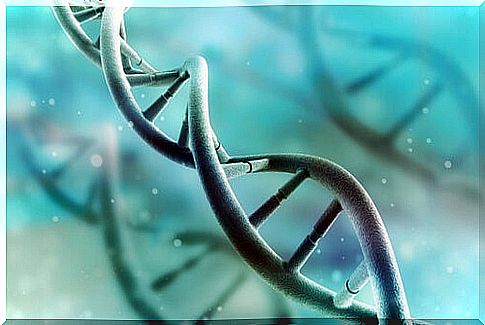Differences Between DNA And RNA
DNA and RNA are basic molecules for life as we know it. They make up our genetic material and allow us to store information on all cellular structures and functions.
Viruses also use these types of molecules to store their genetic information. However, they are different from our cells and each can have one of the two molecules or both. That is, they can have DNA and RNA or just one of the two.
When it comes to our cells, both DNA and RNA are essential and similar. However, they present a series of differences that we are going to see in this article in order to better understand cell function.
What are DNA and RNA?
DNA and RNA are nucleic acids. DNA is short for deoxyribonucleic acid, while RNA is short for ribonucleic acid. They are molecules that allow cellular functioning since they act as a kind of ‘instruction manual’ for them.
DNA contains genetic information. It is found in the nucleus of cells and, to a lesser extent, in another part of the cell called mitochondria. It is composed, in turn, of other simpler structures called nitrogenous bases.
What makes DNA a ‘source of information’ is the combination of these bases, which occurs differently in each organism. That is, it is what determines our genetic code and makes us different from each other.
RNA, for its part, is responsible for protein synthesis. While DNA is responsible for all genetic information, the function of RNA is to make this information is processed by cells and they can fulfill their functions.

What are the differences between DNA and RNA?
To understand the differences between the two molecules, it is necessary to know their structure :
- DNA is made up of two different strands that are shaped like a linear double helix. These same chains roll up and clump together to form chromosomes, which are in the nucleus of the cell.
- RNA is a linear molecule made up of a single chain.
The double helix of DNA is formed thanks to the fact that the nitrogenous bases of the two chains combine with each other, which does not happen in RNA. The difference between the chains of both are the types of bases that form them. In DNA we find a base called thymine, while in RNA it is replaced by uracil. Likewise, the sugar that composes them also varies in the structure of both.
Another difference is that DNA has a greater weight. This is also because it is usually a larger and more complex molecule.
The location of both molecules is different. DNA is found in the nucleus or in the mitochondria. RNA, for its part, can be in other parts of the cell, such as ribosomes.
In addition, RNA has different subtypes according to its function. We found messenger RNA, transfer RNA, and ribosomal RNA. Each of them plays an important role in protein synthesis.

To remind
Although the explanation of DNA and RNA is complex, the important thing is to know that they are different at a structural and functional level. Both molecules are necessary for cell function. At the structural level, the most remarkable thing is that DNA is double-stranded and RNA has only one strand.
At a functional level, in summary, we can say that DNA contains genetic information and RNA is responsible for ‘reading’ this information and transforming it into proteins. These proteins are necessary for the cell to function.









